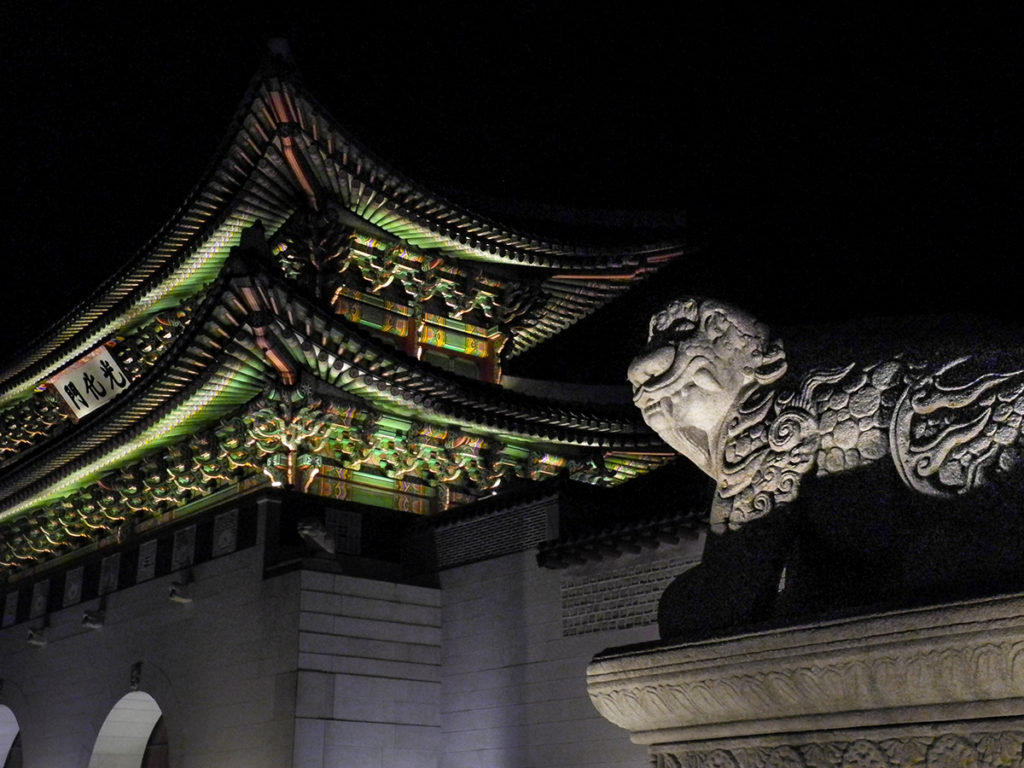

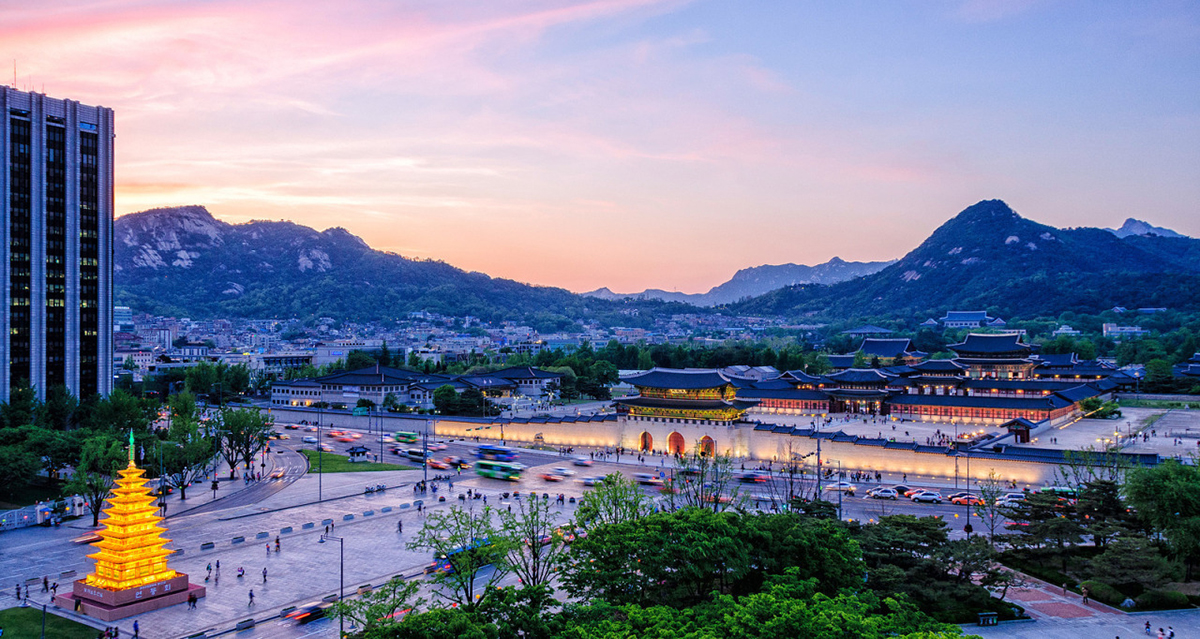
Gyeongbokgung Palace at dusk, seen from the roof garden of the National Museum of Korean Contemporary History. Photo by Robert Kohler.
Several times a year Seoul’s palaces are open to visitors at night. Tickets sell out quickly, but it is worth the effort to try and see these beautifully lit buildings after dark.
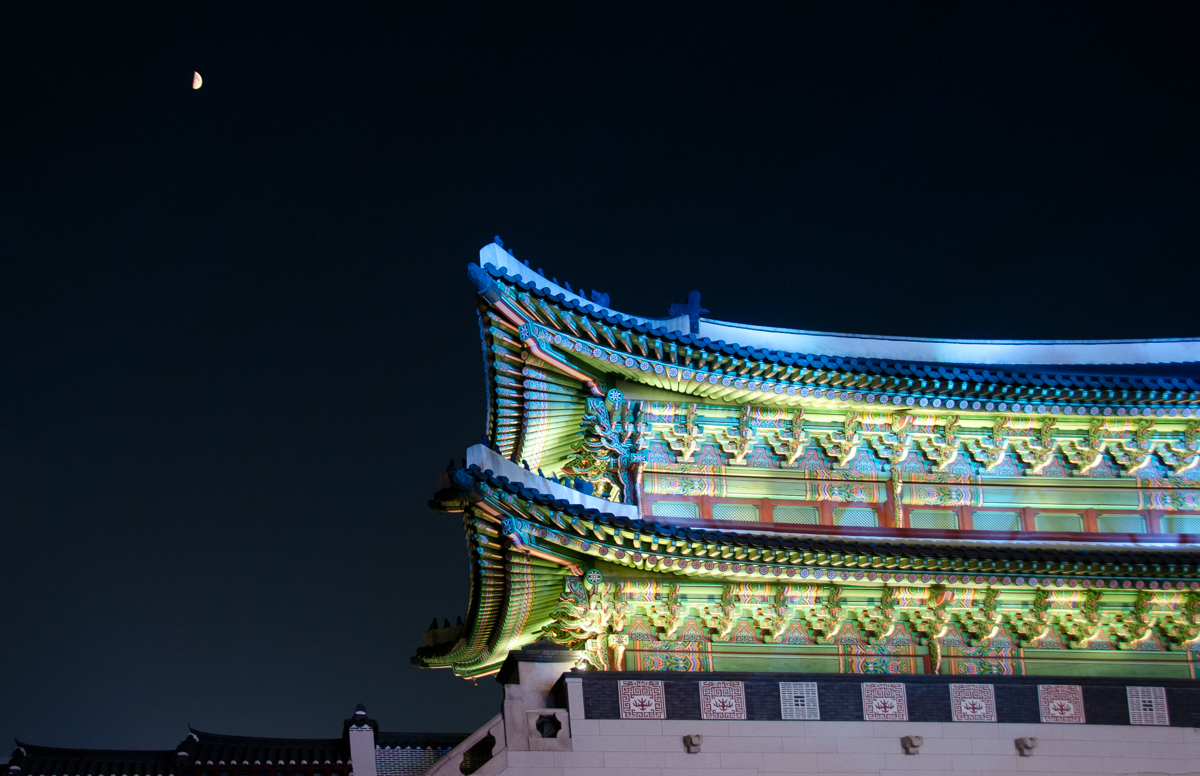
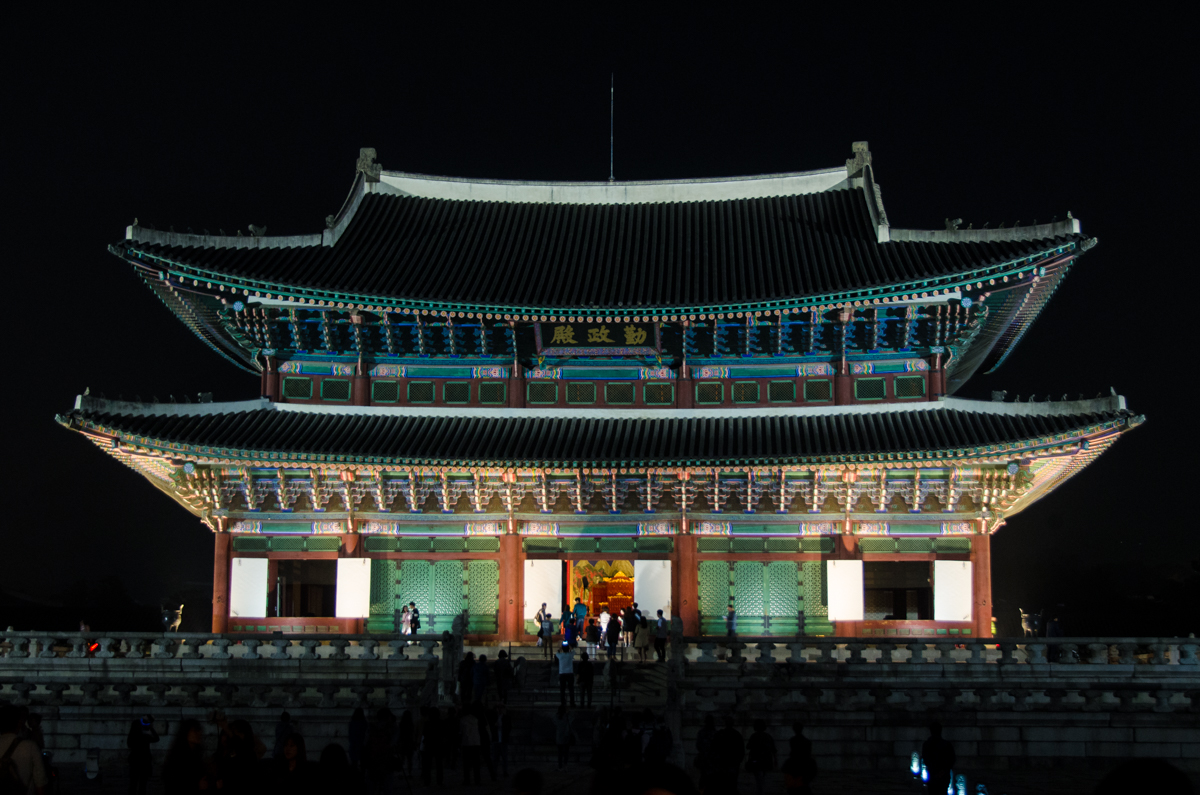
Geunjeongjeon Hall, or Throne Hall, where the king granted audiences to his officials, presided over large official functions, and met foreign envoys
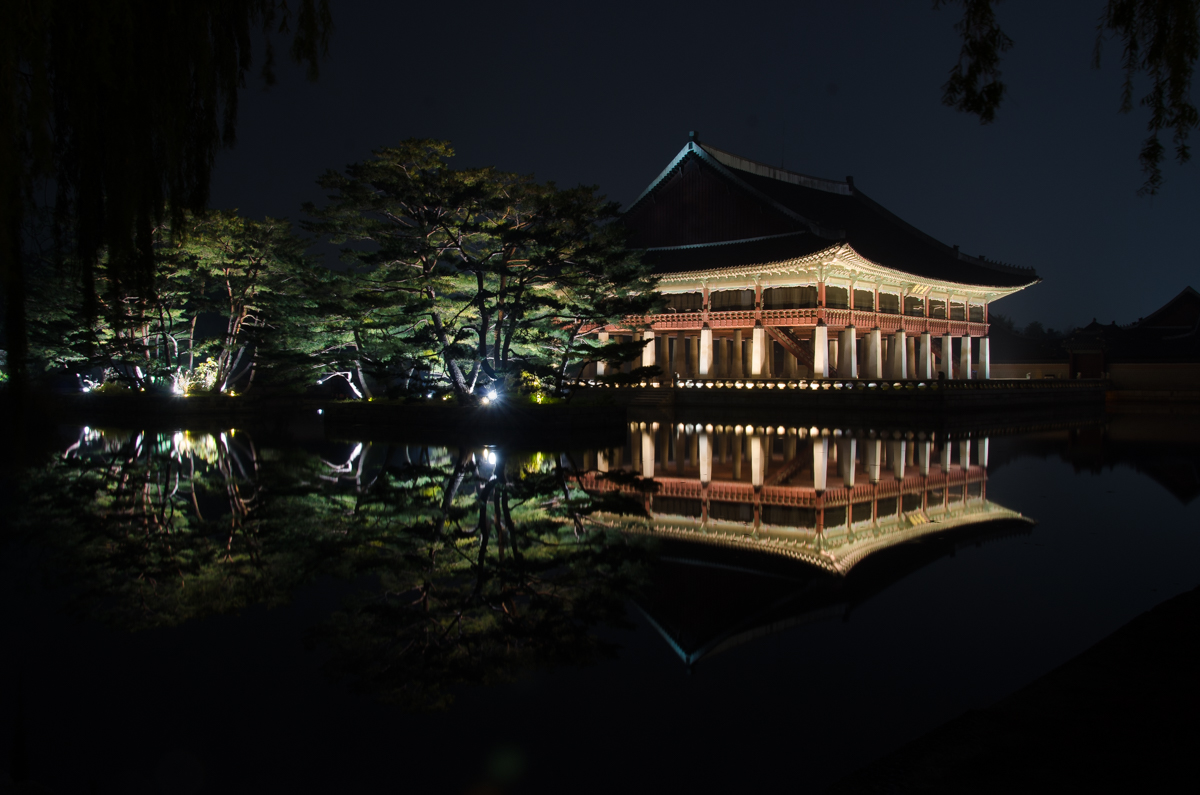
Gyeonghoeru Pavilion, built on a pond near the king’s living quarters, was where he hosted banquets for foreign envoys or his court officials. According to the Palace website, “the name means that the king is capable of handling national affairs only when he has the right people around him, so it was used on joyous occasions.”
During the evening openings, visitors are entertained by traditional Korean music and dance performances — always a treat, but especially so with a backdrop of the illuminated palace buildings.
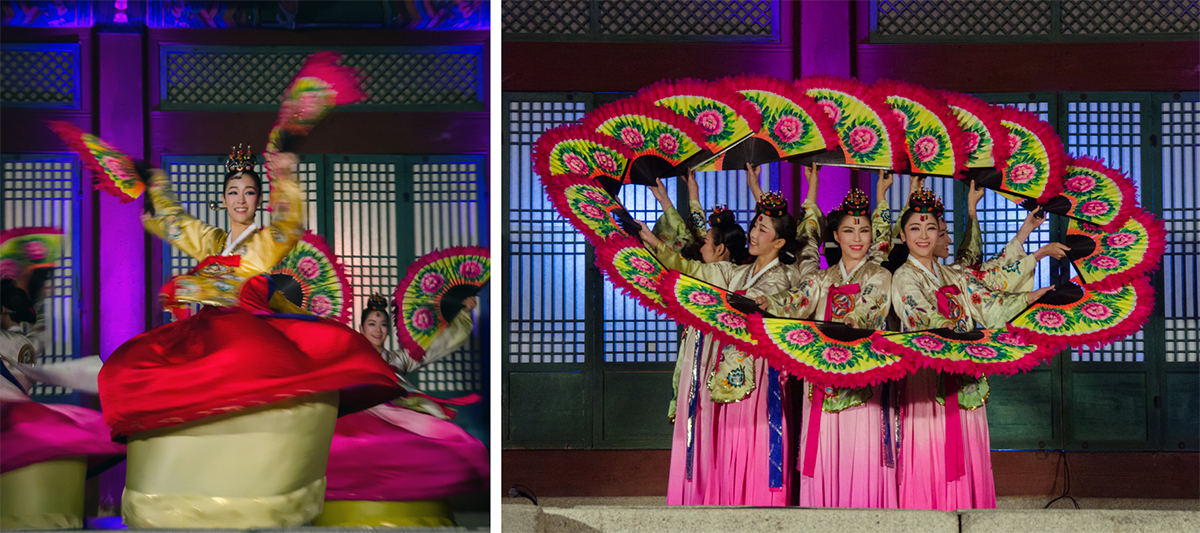
The popular Buchaechum, or Korean Fan Dance, originated thousands of years ago as part of ancient shamanistic rituals. Since then it’s evolved into one of the most highly refined Korean dances.
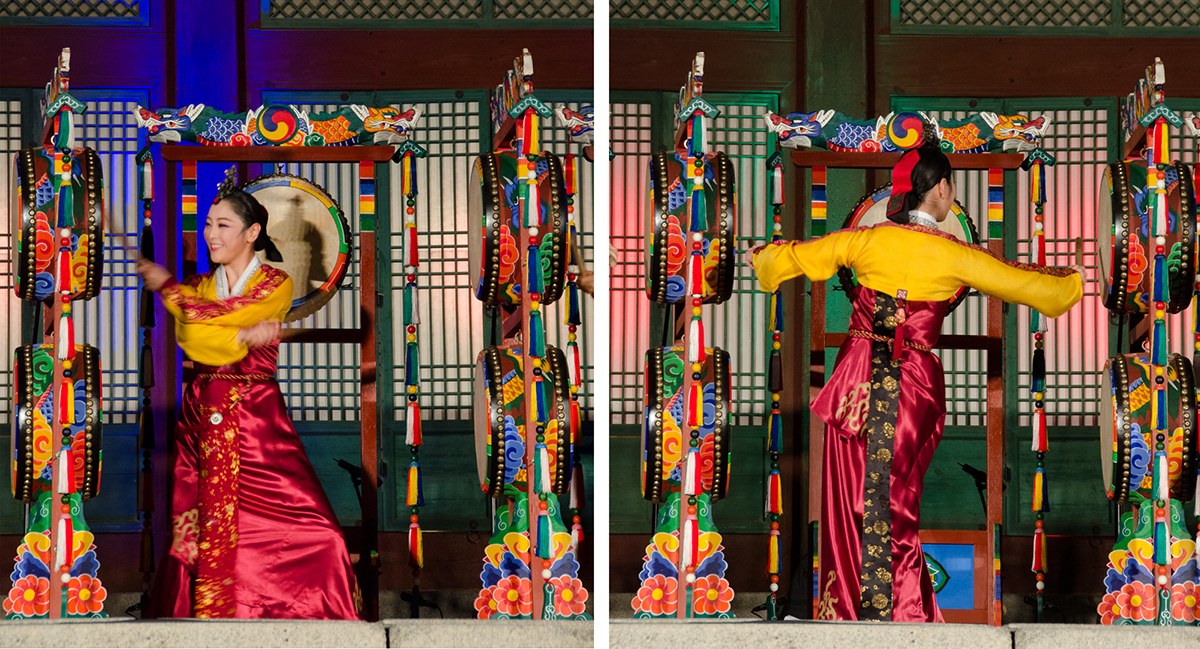
Samgo-mu, Korean drum dance
The performers in Samgo-mu, the Korean drum dance, each have three sets of drums. They begin slowly and deliberately, becoming faster and more frenetic as they go, but always in perfect synchronization. The dancers bend their backs and move their bodies in a variety of ways as they hit the drums to show their flexibility as well as their sense of rhythm, as you can see in the clip below.
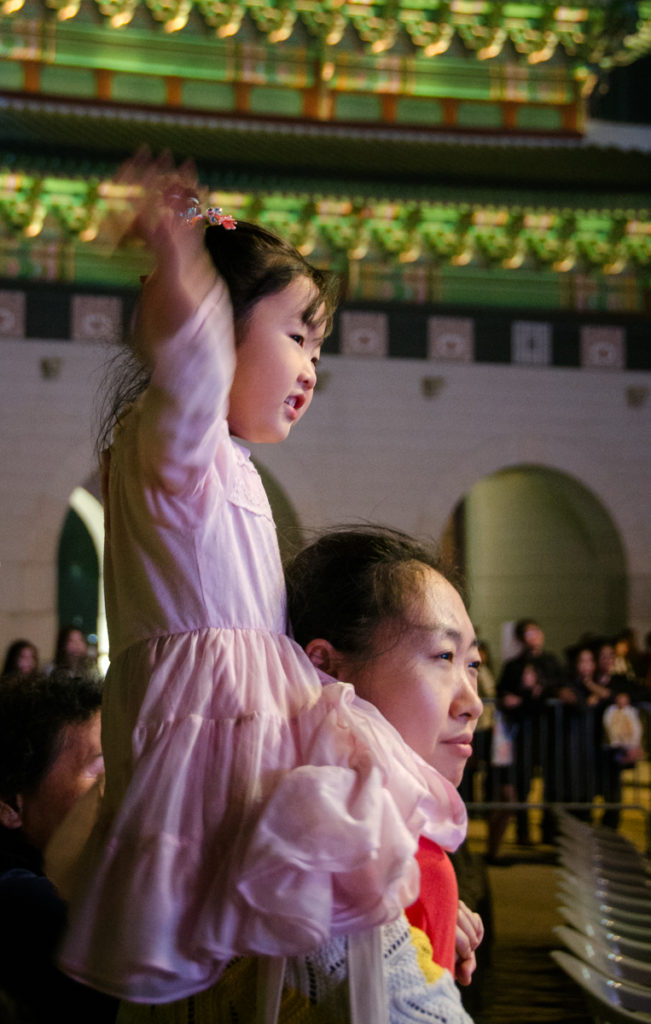
One tiny audience member was very excited by it all, bouncing up and down on her mom’s shoulders and pumping her little fists in the air in time to the music. Some of us were tempted to do the same, but we wouldn’t have looked nearly as cute. 🙂
~ Debbi
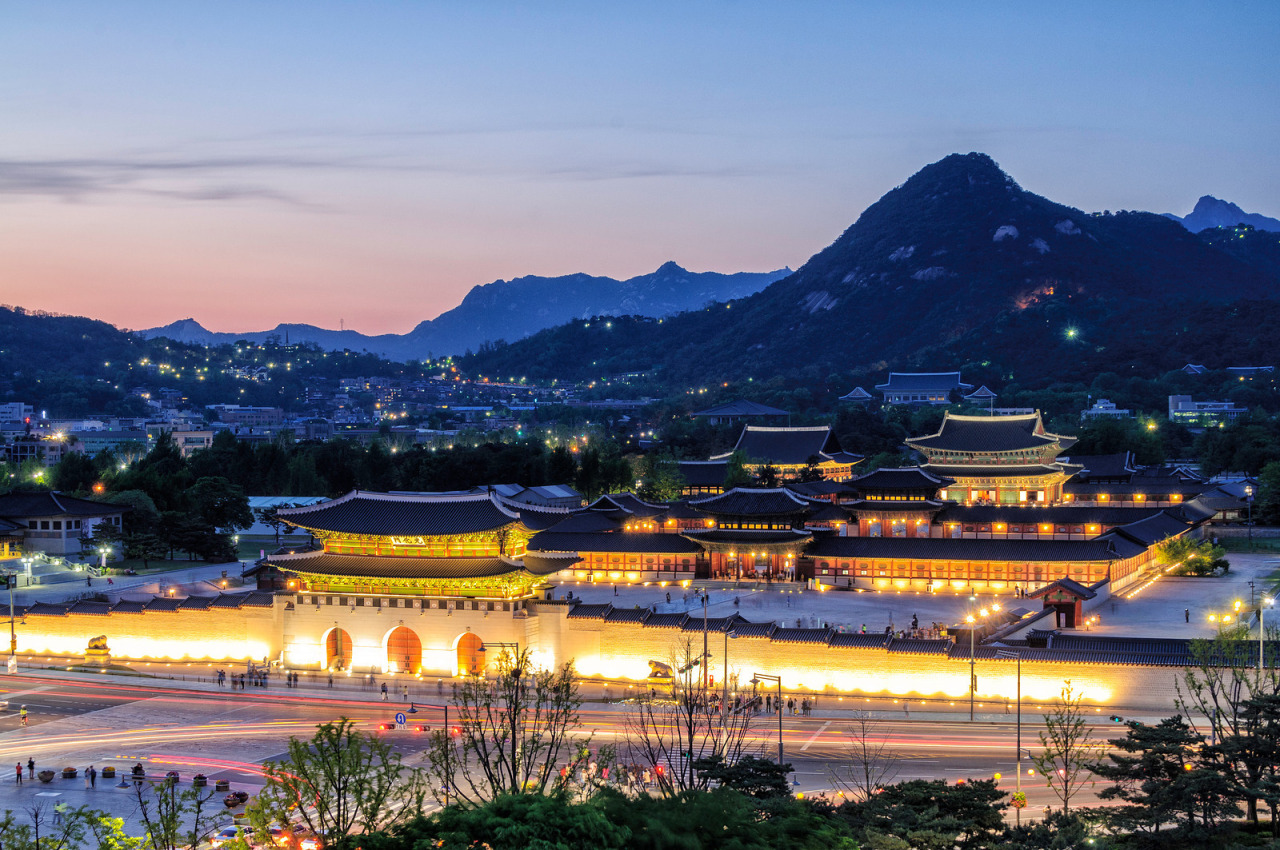
Photo by Robert Kohler. Check out his website for many more — http://rjkoehler.tumblr.com/
